Summary
Breville FoodCycler REVIEW
$599
PAT PILCHER checks out a marvellous invention and deals a mighty blow to his stinky kitchen while he’s at it.
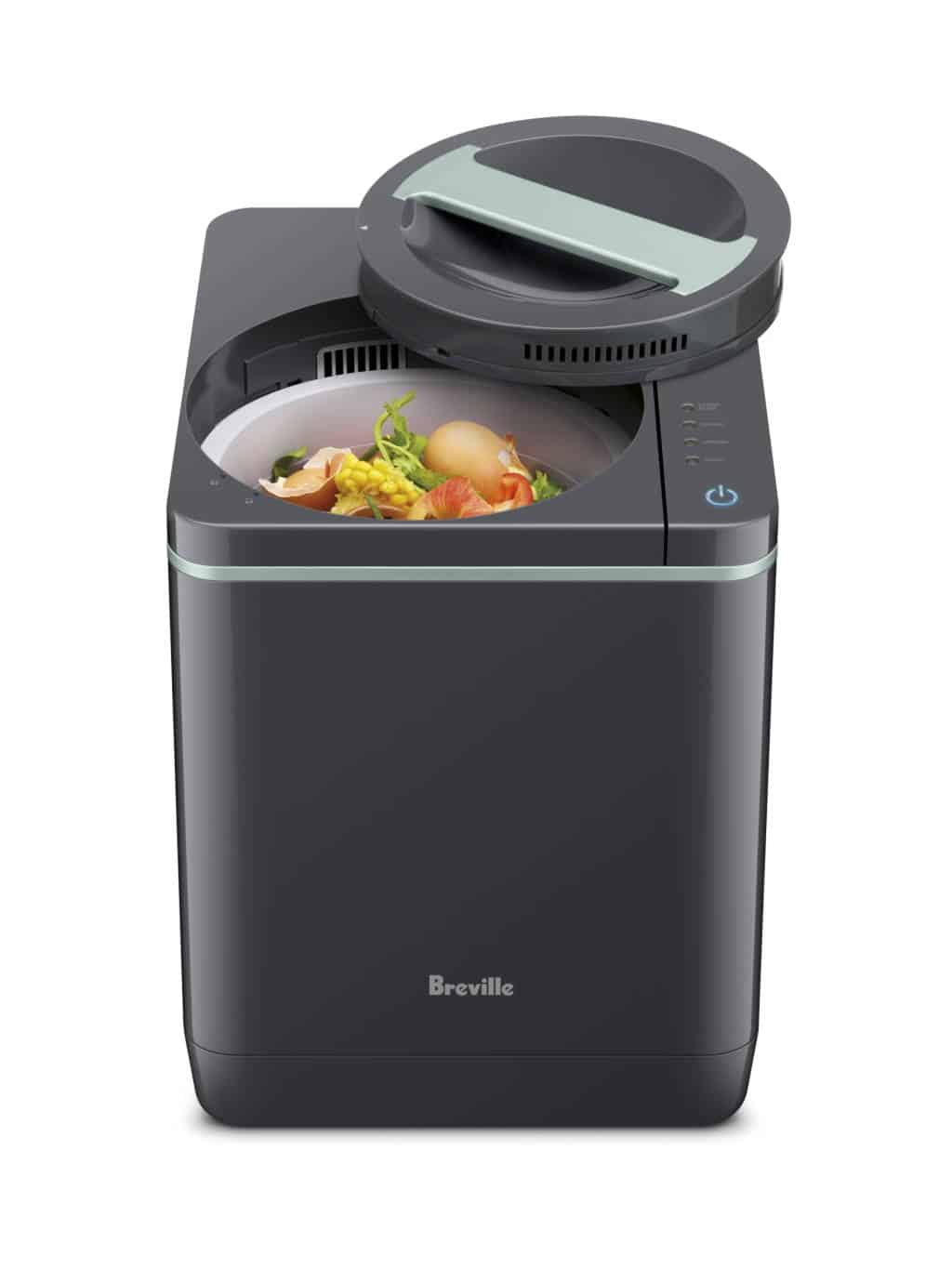
 I love to cook, and I love gadgets. So, it wasn’t all that surprising that Breville’s Food Cycler gained a big tick by combining both my passions and solving a few problems in the process.
I love to cook, and I love gadgets. So, it wasn’t all that surprising that Breville’s Food Cycler gained a big tick by combining both my passions and solving a few problems in the process.
We’re keen gardeners, with a large section that is well planted up. We also grow a lot of our own veg and a lot of herbs. Because we prefer to cook from scratch instead of buying pre-packaged meals, we also generate many food scraps. We’ve long had a small compost bin in the kitchen for the vegetable scraps which go onto our compost heap, which, in turn, is used to mulch and feed the gardens on our property.
Would you like to support our mission to bring intelligence, insight and great writing to entertainment journalism? Help to pay for the coffee that keeps our brains working and fingers typing just for you. Witchdoctor, entertainment for grownups. Your one-off (or monthly) $5 or $10 donation will support Witchdoctor.co.nz. and help us keep producing quality content. It’s really easy to donate, just click the ‘Become a supporter’ button below.
While this sounds great (and mostly it is), there’s always a catch. Firstly, the compost bin seems to always be full when it’s my turn to cook. Emptying it onto the compost heap in the middle of a howling southerly as rain pelts down and the mercury slides into negatives isn’t fun. Secondly, the compost bin in the kitchen can get a bit whiffy, and in summer it can attract flies, which for obvious reasons isn’t ideal either. Add to this that we still have to bin proteins such as bones and meat scraps which are not suitable for composting as they can attract rats and other vermin to the compost pile.
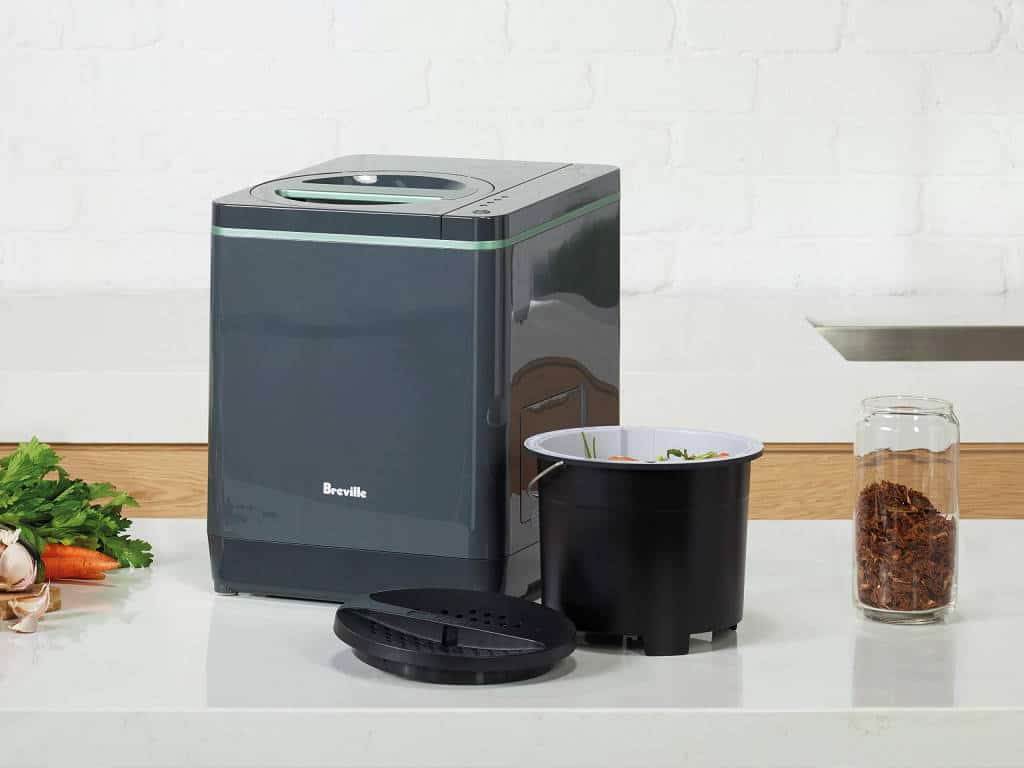
These challenges apply to my situation, but things are considerably more challenging for anyone who likes to cook but lives in an apartment. Without access to a garden or a compost heap, apartment dwellers must throw all their food scraps out. Finding a home for these until rubbish collection day can be a stinky challenge.
Enter stage left, the Breville Food Cycler, a super-fast composting doodah that should, in theory, allow me to cut down on the amount of food waste from my home that ends up in a landfill. It should also allow me to quickly create compost and reduce the volume of food scraps sitting in a bin in my kitchen getting stinky and attracting flies.
When it comes to its design, the FoodCycler isn’t exactly petite. It resembles a gunmetal grey bread maker that has developed a serious steroid habit. That said, it’s small enough to fit in an under-bench cupboard, so it isn’t taking up kitchen bench space when not in use. Breville also supplies a lid for the FoodCycler’s removable 2.5L bucket, with a built-in carbon filter. This handily means that food scraps can be placed in the bucket while you cook, and the FoodCycler can remain out of the way. The lid’s carbon filter is a nice touch as it keeps odours at bay. Looks-wise, its gunmetal grey finish and minimalist design also mean it’ll easily fit in with most kitchen decors.
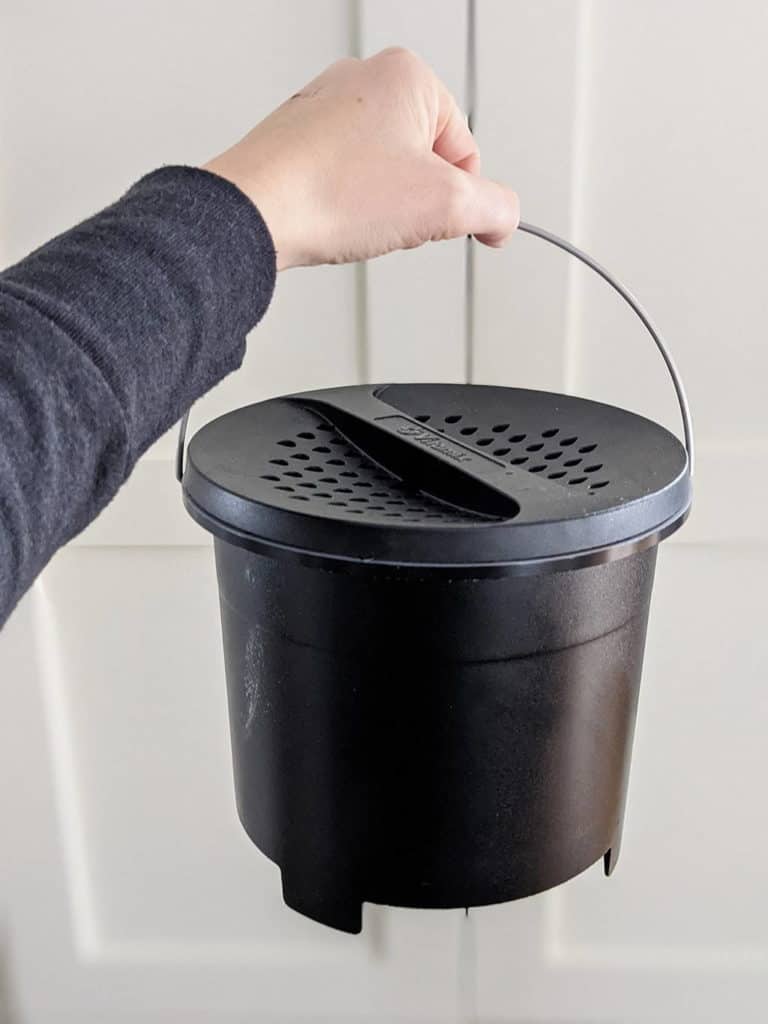
Getting setup was a straightforward exercise involving removing all the “Remove this label before use” stickers (I’m not sure why, but there were quite a few of them). Once that was done, I plugged it in and was ready to go.
In use, the FoodCycler is dead easy to drive. Simply put all your food scraps into the bucket, not filling it above the “Max” line. Once that’s done, insert the bucket into the FoodCycler and turn it on. When it’s operating, the machine sounds like an exceptionally quiet dishwasher. I found that running the unit after I’d finished prepping and cooking dinner, leaving it until the following morning gave its bucket enough time to cool off, which made emptying it just that much easier.
The FoodCycler works by first dehydrating food scraps to reduce their size. A powerful yet quiet grinder then pulps the dried scraps, and they are then cooled so they can be safely handled. While adding protein to compost is considered a no-no, the FoodCycler can happily work with smallish chicken or fish bones and the odd scrap of meat or eggshells. That said, it won’t work with larger bones. Doing some RTFM (reading the flipping manual!), sweets, chewing gum, liquids, used cooking oil, large fruit pips and processed paper shouldn’t be put into the FoodCycler.
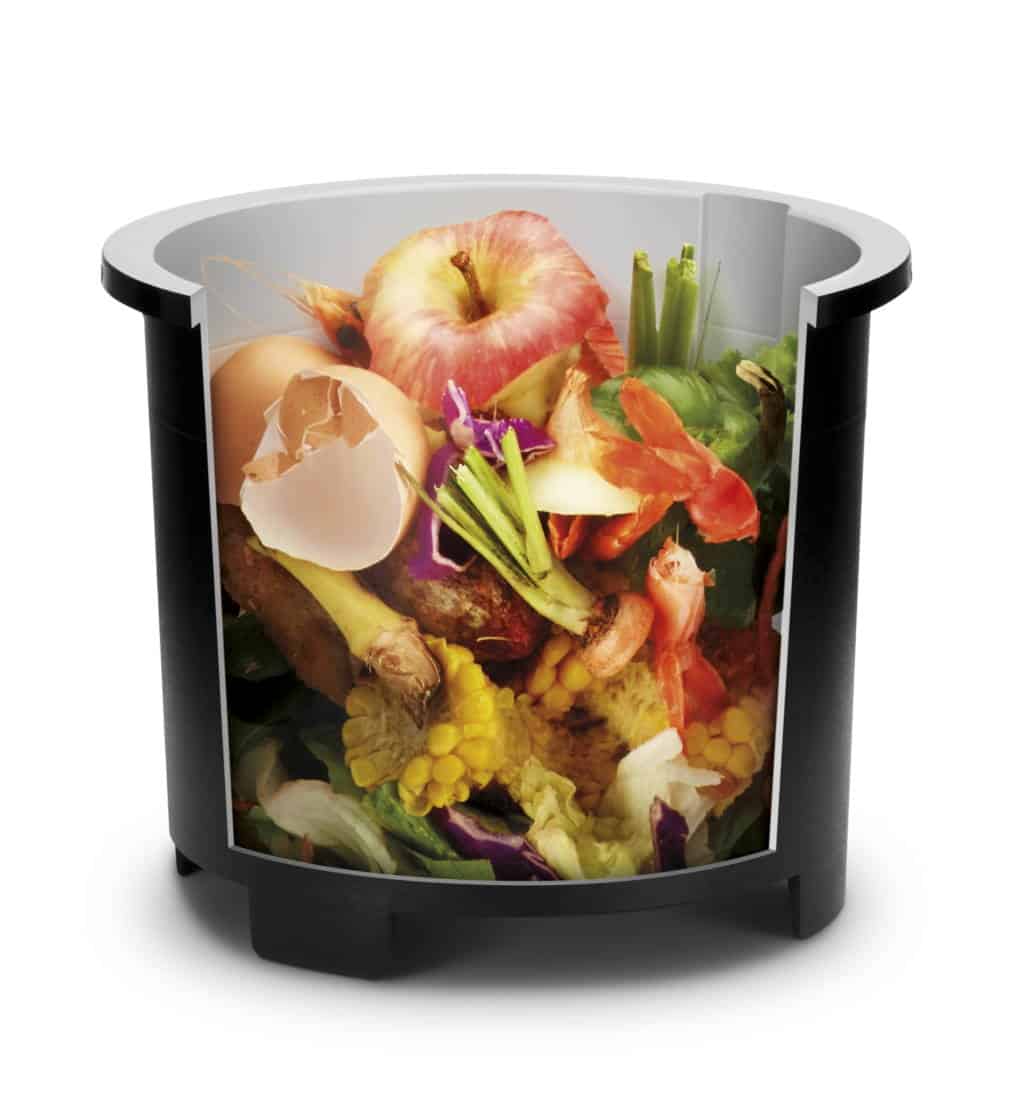
All told, using the FoodCycler felt vaguely magic-like. After putting 2 litres of food scraps into its bucket and running it overnight, scraps were reduced to just a handful of dry matter that looked a lot like your grandma’s potpourri. Instead of waiting for scraps to break down into compost, they can be added to the garden once the machine has done its thing.
Setting up and using the FoodCycler was so easy that anyone should be able to get up and running in no time at all. Built-in (and user-replaceable) carbon filters also meant that there was no smell.
While its removable bucket is a bit smaller than I’d have liked, I’m only cooking for two, so capacity issues were never a problem. If you’re cooking for a large family, you might need to run the FoodCycler twice. Here’s hoping Breville makes a second FoodCycler bucket and filtered lid available soon.
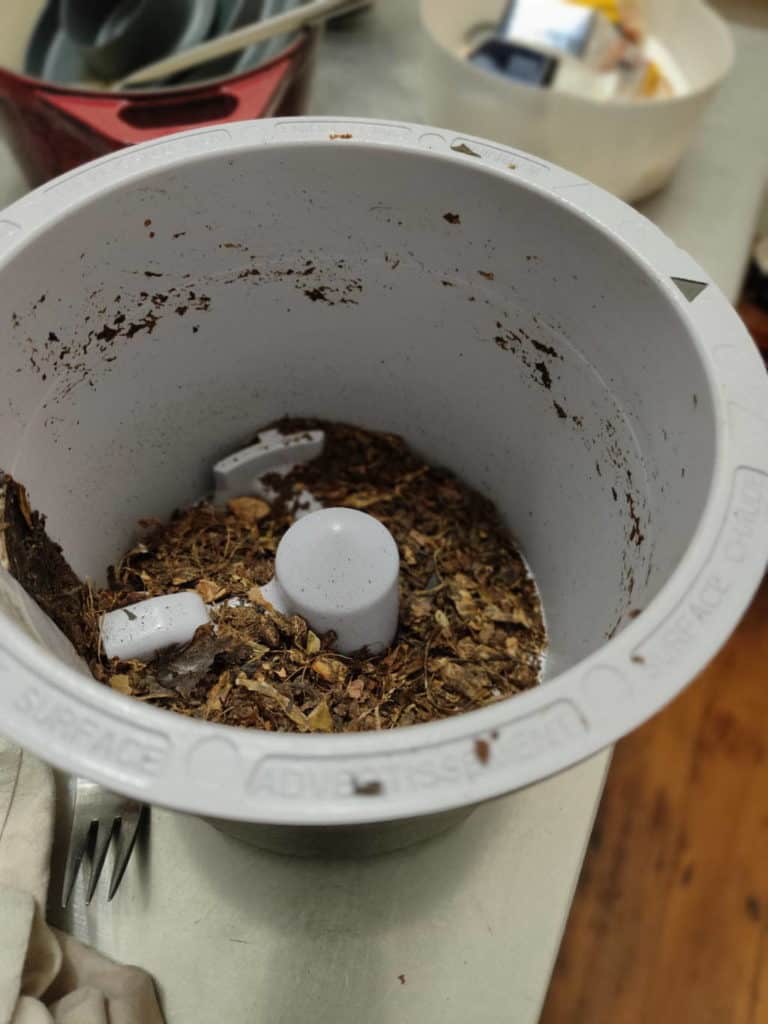
If you don’t want the grief of composting but still want to put your food waste to good use, the FoodCycler is just what the doctor ordered. While it is on the large side, think about the space you’re saving by not needing a large veg scraps container stinking out your kitchen. For anyone living in an apartment without access to a compost heap, the food cycler is a great way to reduce the volume of veg waste being put out with a nutrient-rich feed for any pot plants or shrubs on the balcony. Thanks to an effortless setup plus a straightforward design, the FoodCycler easily scores a 10 out of 10.















